Why Peptides Outperform Traditional Hair Serums
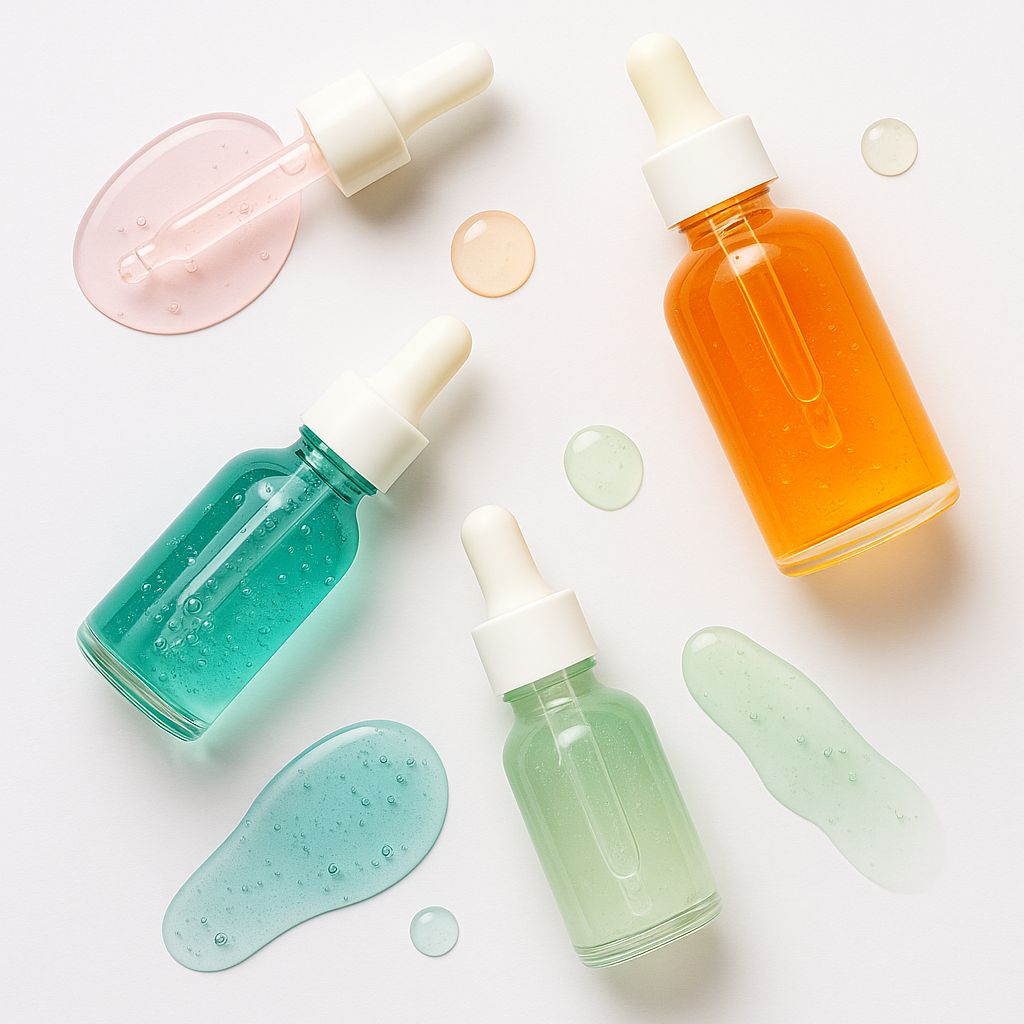
For decades, traditional hair serums have promised fuller, healthier hair. Yet, despite an endless cycle of product launches and exotic ingredients, results often plateau or fail to materialize. A quiet revolution, however, has been brewing in the form of peptides — small, bioactive amino acid chains that act more like intelligent messengers than cosmetic agents. This article explores the science, the clinical evidence, and the potential of peptides as the future of hair health.
1. Understanding the Hair Follicle Ecosystem
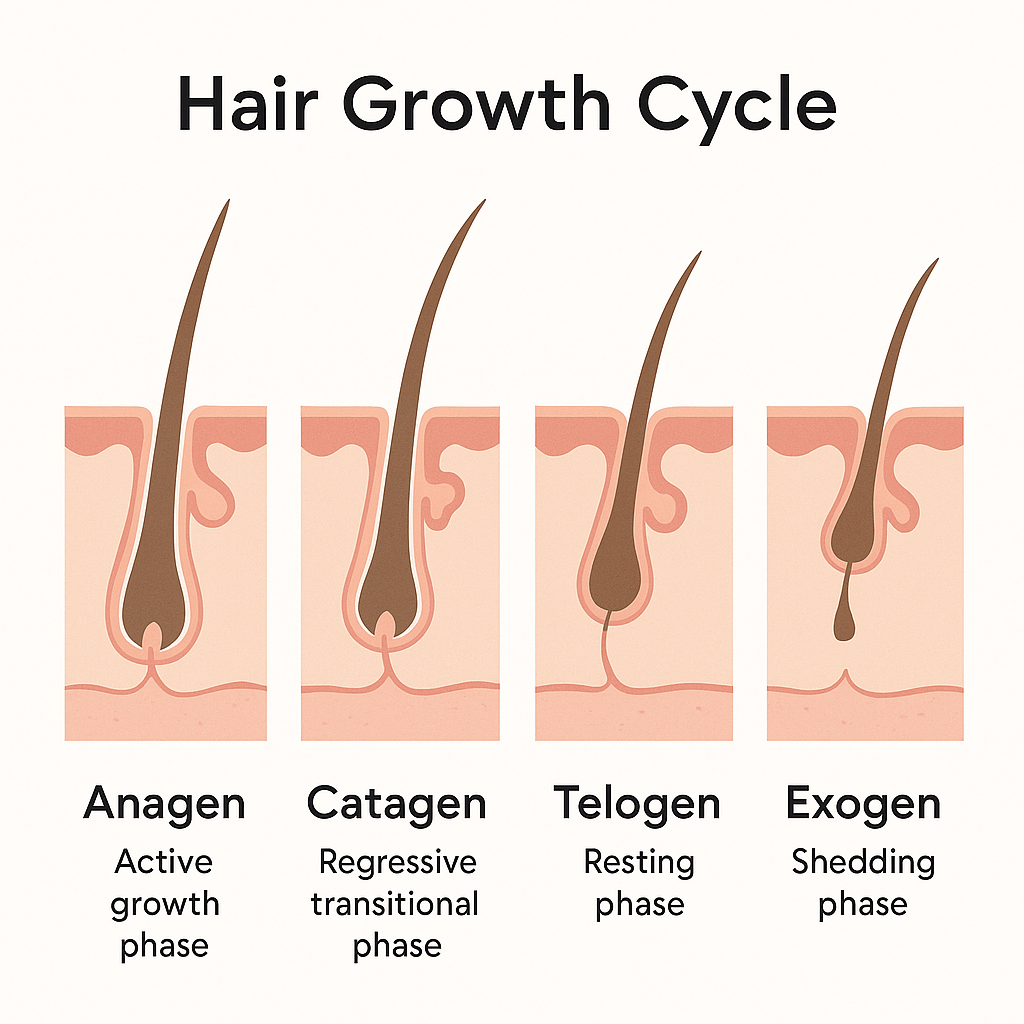
To understand why peptides are so effective, we must first understand the complexity of the hair follicle. Each follicle is a dynamic mini-organ consisting of dermal papilla cells (DPCs), keratinocytes, melanocytes, sebaceous glands, and associated vascular and immune networks.
The growth cycle of a hair follicle includes:
- Anagen: Active growth phase
- Catagen: Regressive transitional phase
- Telogen: Resting phase
- Exogen: Shedding phase
Many traditional serums aim to delay the transition from anagen to telogen or stimulate vasodilation (as in the case of minoxidil), but very few attempt to engage with the cellular signals that govern follicular health and cycling.
2. What Are Peptides?
Peptides are short chains of amino acids — typically fewer than 50 — that serve as signaling molecules in the body. They differ from proteins in length and complexity, but share a critical similarity: the ability to bind to specific receptors and influence cellular behavior.
In dermatology, peptides have been shown to:
- Increase collagen production (e.g., Matrixyl, copper peptides)
- Improve wound healing (e.g., thymosin beta-4 analogs)
- Modulate inflammation and oxidative stress
- Stimulate angiogenesis (formation of new blood vessels)
- Promote hair follicle proliferation and cycling
3. Peptides and Hair Regeneration

Unlike cosmetic ingredients that merely coat the hair shaft or provide superficial hydration, peptides influence the behavior of the hair follicle itself. They can stimulate dermal papilla cells (DPCs), upregulate key transcription factors, and promote the expression of growth factors such as VEGF (vascular endothelial growth factor), IGF-1 (insulin-like growth factor 1), and KGF (keratinocyte growth factor).
Several peptides of interest in the context of hair regeneration include:
- GHK-Cu: A copper-binding tripeptide with robust data supporting its role in increasing follicle size, reducing inflammation, and improving tissue remodeling.
- PTD-DBM: A peptide complex that stabilizes beta-catenin, a key protein in the Wnt signaling pathway — critical for follicle activation and regeneration.
- Thymulin and Thymosin Beta-4: Involved in immune modulation and cellular migration, supporting follicular environment recovery.
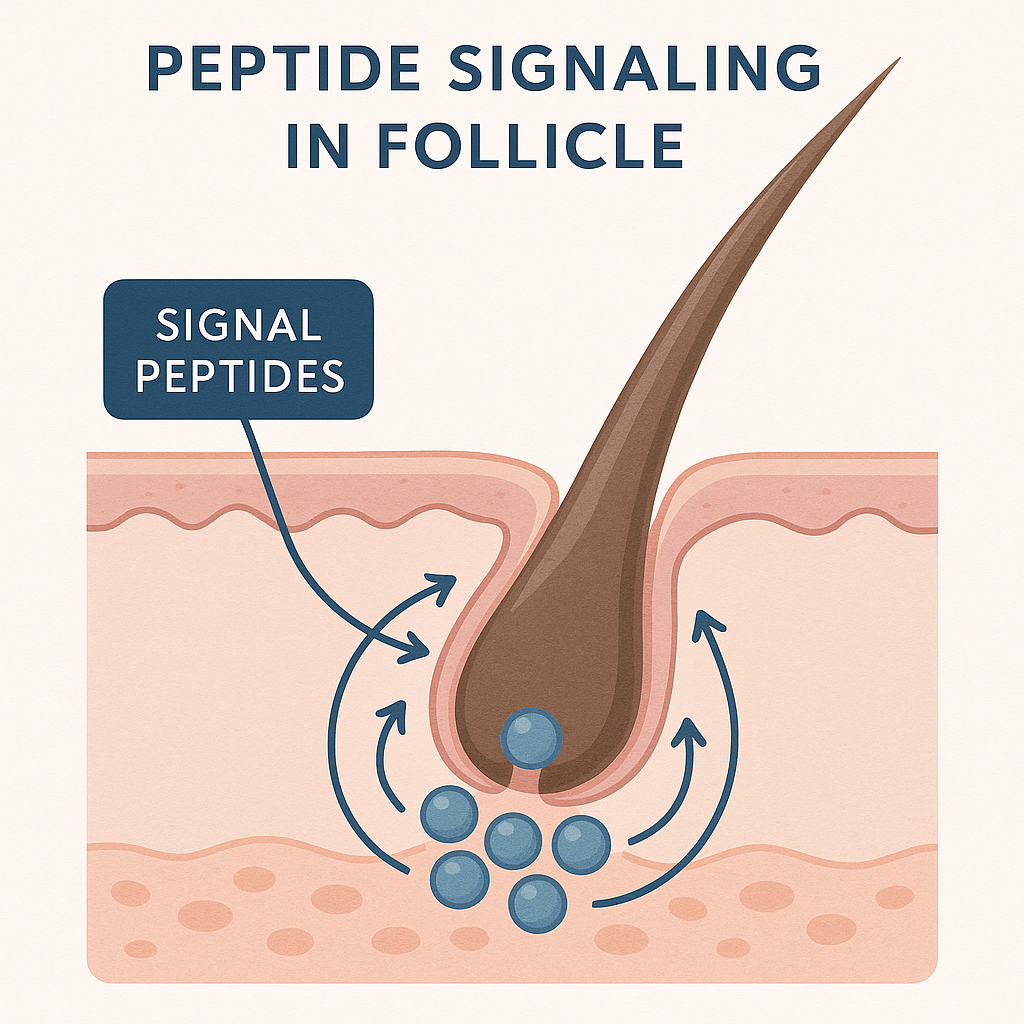
4. Mechanisms of Action
Peptides exert their effects via several intertwined mechanisms:
4.1. Wnt/β-catenin Pathway
This signaling cascade is central to follicular development and anagen initiation. Peptides like PTD-DBM promote the stabilization of β-catenin, which leads to enhanced follicular stem cell proliferation and transition into the growth phase.
4.2. ECM Remodeling and Angiogenesis
GHK-Cu has been shown to upregulate extracellular matrix components and increase the formation of microcapillaries. This improves nutrient delivery and waste clearance — key factors in sustaining healthy follicular function.
4.3. Anti-Inflammatory and Antioxidant Actions
Chronic low-grade inflammation is increasingly recognized as a driver of follicular miniaturization. Peptides modulate pro-inflammatory cytokines (e.g., IL-1, TNF-α) and reduce oxidative stress markers like MDA (malondialdehyde), creating a more hospitable environment for growth.
5. Clinical Research: What the Studies Say
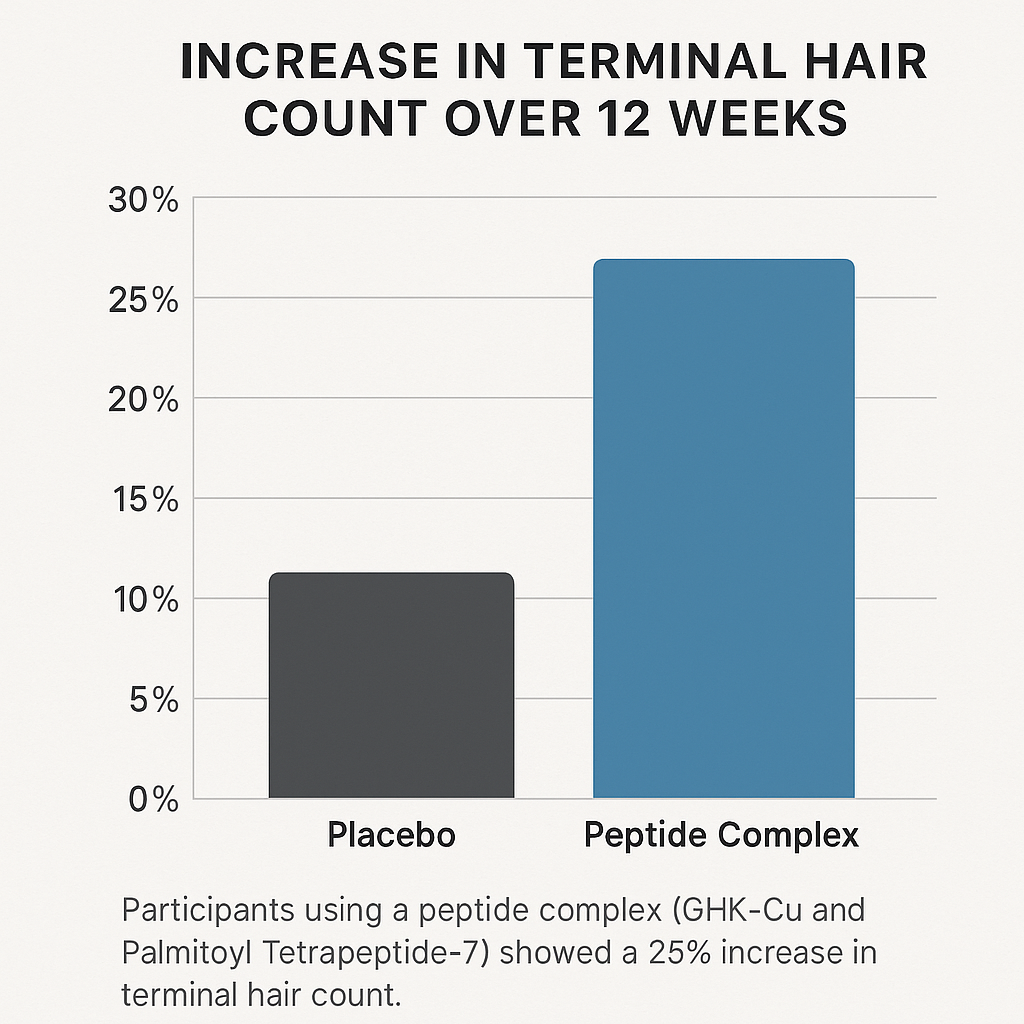
Numerous human and animal studies have documented the effects of peptides on hair density, shaft thickness, and dermal papilla activity.
In a 2022 randomized controlled trial published in Experimental Dermatology, participants using a peptide complex (GHK-Cu, Palmitoyl Tetrapeptide-7) exhibited a 25% increase in terminal hair count after 12 weeks, significantly outperforming placebo groups.
Animal models using PTD-DBM showed reactivation of dormant follicles and even de novo folliculogenesis in some murine subjects, suggesting that peptide signaling could one day play a role in reversing irreversible alopecia.
6. Comparison With Traditional Serums
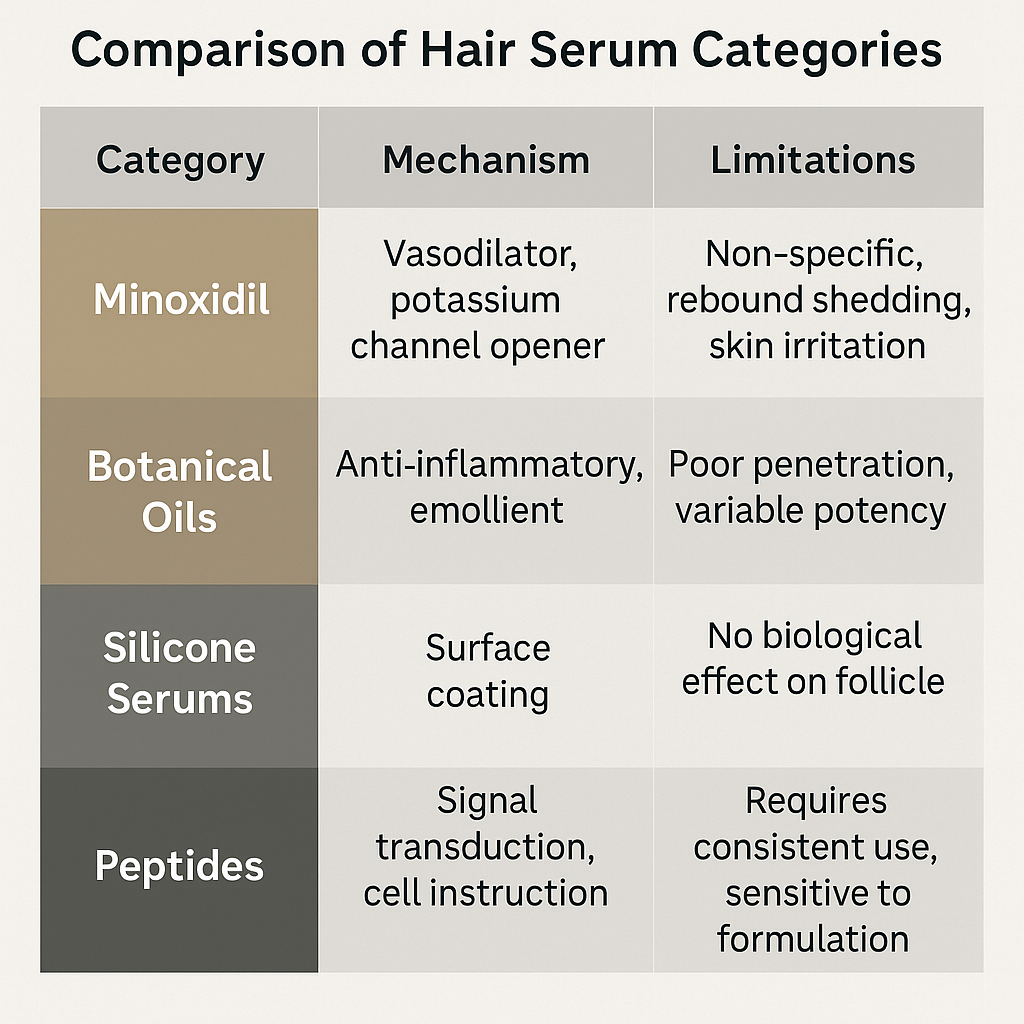
To appreciate peptides’ superiority, it's essential to contrast them with older approaches:
| Category | Mechanism | Limitations |
|---|---|---|
| Minoxidil | Vasodilator, potassium channel opener | Non-specific, rebound shedding, skin irritation |
| Botanical Oils | Anti-inflammatory, emollient | Poor penetration, variable potency |
| Silicone Serums | Surface coating | No biological effect on follicle |
| Peptides | Signal transduction, cell instruction | Requires consistent use, sensitive to formulation |
7. Safety Profile and Considerations
One of the key advantages of peptides is their excellent safety profile. Most cosmetic peptides are non-immunogenic, non-toxic, and free from endocrine-disrupting potential. However, as signaling agents, they require thoughtful formulation and delivery systems — encapsulation or micelle carriers are often used to enhance penetration and stability.
Peptides are also less likely to interact negatively with systemic medications or underlying medical conditions, making them suitable for a broader population, including postpartum individuals and those with autoimmune sensitivities.
8. Delivery Methods and Bioavailability
Peptides are hydrophilic and relatively large in molecular weight, which poses challenges for transdermal absorption. Advanced delivery systems include:
- Liposomes and niosomes
- Microneedling or derma rollers (to bypass the stratum corneum)
- Hydrogel-based slow release systems
- Penetration enhancers (e.g., ethanol, urea, dimethyl isosorbide)
9. The Future of Peptide-Based Hair Therapies
As the cost of peptide synthesis continues to fall and novel sequences are discovered, the future of hair restoration is poised to shift dramatically. Potential innovations include:
- CRISPR-compatible peptide vectors for gene editing
- Peptides with dual-action on pigmentation and follicle growth
- Neuropeptide modulators that influence stress-related hair loss
We are entering a new era of personalized dermatology, and peptides — with their modular, programmable nature — are the scaffolding on which that future will be built.
10. Conclusion
Peptides represent a shift from symptomatic treatment to cellular-level optimization. They don't just stimulate — they communicate. This capacity to engage our biology in precise, regenerative ways marks a departure from the blunt tools of the past.
As our understanding deepens and delivery systems improve, peptide-based therapeutics will likely become the gold standard in hair care — not just for hair loss, but for scalp health, follicular longevity, and cosmetic vitality.

Join the Conversation